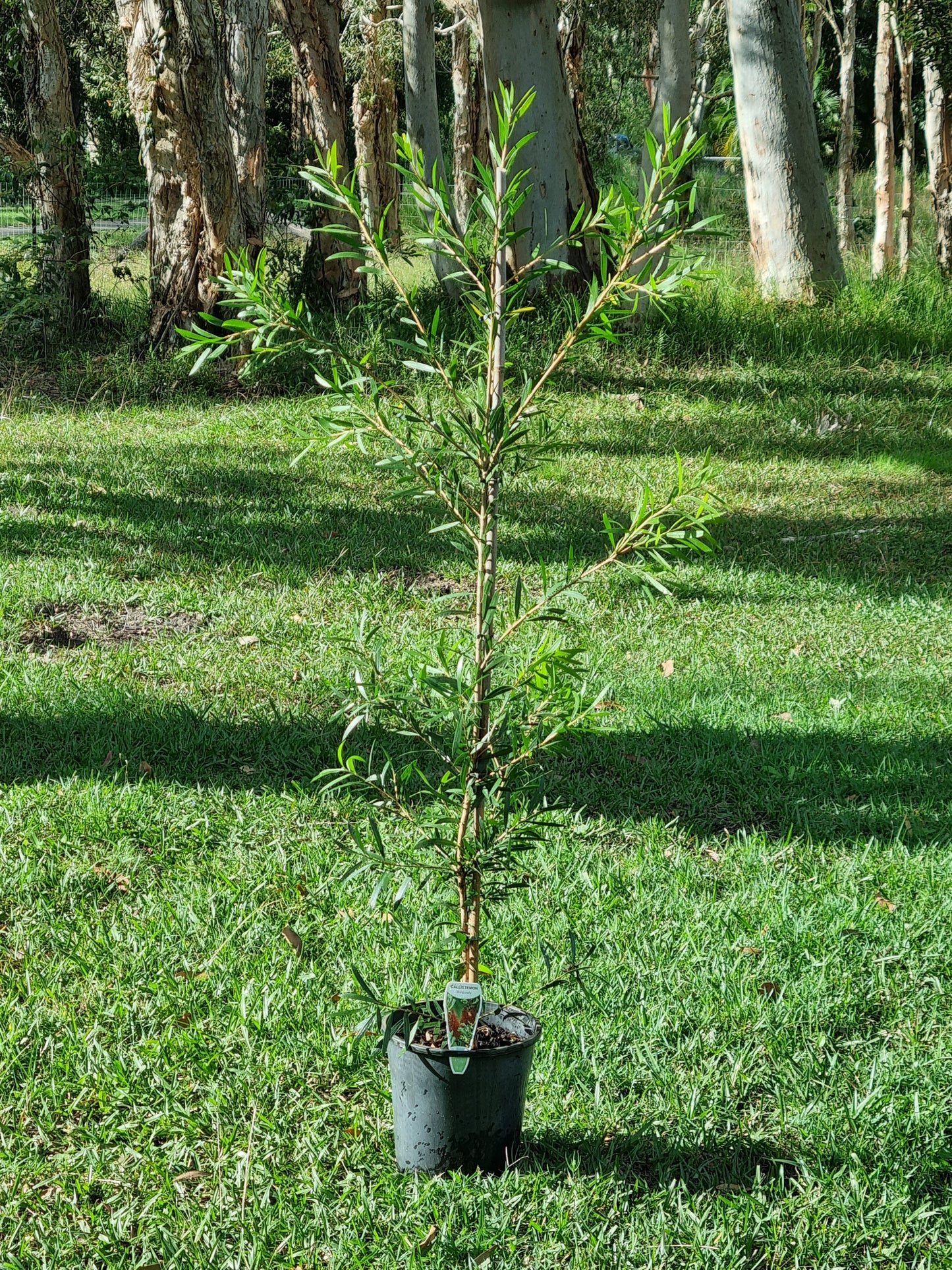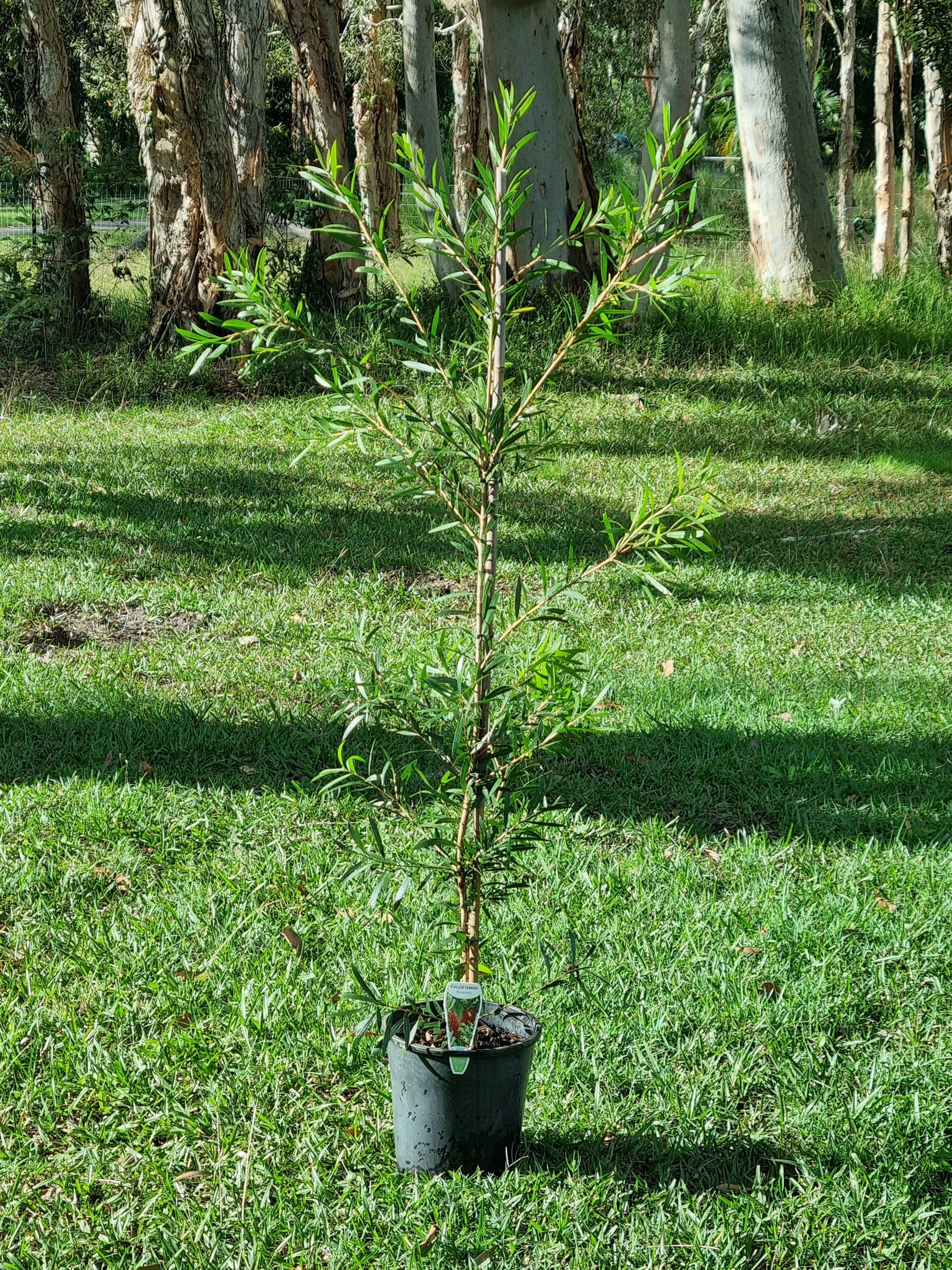Delivertree
Burgundy Bottlebrush – Callistemon 'Burgundy'
Burgundy Bottlebrush – Callistemon 'Burgundy'
Couldn't load pickup availability
The Burgundy Bottlebrush is a compact, evergreen shrub known for its striking deep red to burgundy bottlebrush flowers, which attract birds and pollinators. Its dense foliage and naturally bushy habit make it an excellent choice for hedges, borders, or as a standout feature plant.
Quick Overview:
- Common Name: Burgundy Bottlebrush
- Botanical Name: Callistemon 'Burgundy'
- Origin: Australian cultivar bred for vibrant flower colour
- Height & Width: 1.5–3 m high × 1–2 m wide
- Foliage: Dense, narrow, green leaves with a slight silvery sheen
- Flowers: Deep red to burgundy bottlebrush flowers from spring to summer, with occasional blooms in autumn
- Wildlife Attraction: Flowers attract bees, butterflies, and nectar-feeding birds
- Position: Full sun to part shade
- Soil: Well-drained soil; adapts to sandy, clay, or loamy soils
- Tolerance: Light frost, coastal conditions, and moderate drought once established
- Maintenance: Low; responds well to light pruning and shaping
- Etymology: Callistemon is derived from the Greek “kallos” (beauty) and “stemon” (stamen), referring to the showy staminate flowers
Detailed Description:
The Burgundy Bottlebrush (Callistemon 'Burgundy') is a compact, evergreen shrub that stands out with its deep red to burgundy bottlebrush flowers, creating a vibrant display from spring to summer. These nectar-rich flowers are a magnet for bees, butterflies, and nectar-feeding birds, making this plant a valuable addition to wildlife-friendly gardens.
The foliage is dense, with narrow, slightly silvery-green leaves that provide year-round texture and colour. This bushy, naturally rounded shrub is perfect for hedging, screening, or as a feature plant in both native and mixed gardens. It can thrive in full sun or part shade, and once established, it shows good tolerance to light frost, moderate drought, and coastal conditions.
Burgundy Bottlebrush is easy to maintain, responding well to light pruning for shape and size control. Regular deadheading of spent flowers can encourage further blooming, while an occasional heavier prune every 3–4 years helps maintain a dense and vigorous habit.
Growth and Maintenance:
- Watering: Regular watering during the first 6–12 months. Once established, water during prolonged dry spells
- Fertilising: Use a slow-release all-purpose fertiliser in spring for best flowering
- Mulching: Maintain a 5 cm organic mulch layer around the base, keeping it clear of the stem
Pruning:
- Light Pruning: Regular light trimming to maintain shape and remove spent flower spikes
- Hedge Form: Can be pruned tightly for a formal hedge or allowed to develop a softer, rounded form
- Hard Pruning: Every 3–4 years, perform a medium to hard prune (10–30%) to rejuvenate and encourage fresh, dense growth
Common Uses:
- Feature shrub in native gardens or mixed borders
- Nectar-rich planting for wildlife gardens
- Formal or informal hedging
- Container planting for patios or balconies
- Coastal plantings due to moderate salt tolerance
Planting Benefits:
- Vibrant Flowers: Deep red to burgundy blooms create a striking visual impact
- Wildlife Friendly: Attracts bees, butterflies, and nectar-feeding birds
- Versatile Uses: Can be grown as a hedge, screen, or feature shrub
- Low Maintenance: Minimal pruning and adaptable to various soil types
- Drought Tolerant: Once established, it can withstand moderate dry periods
Share


